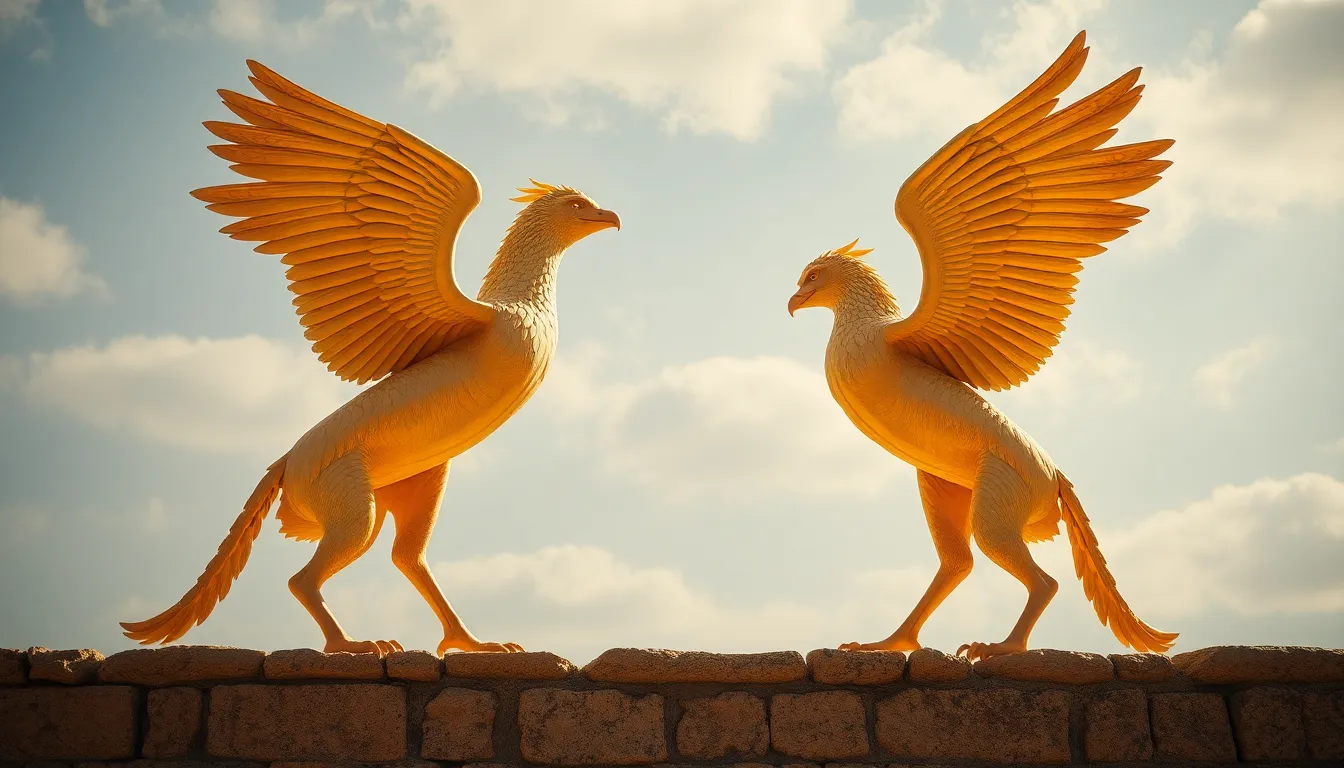The Cultural Significance of Harpies in Ancient Greece
I. Introduction
In ancient Greek mythology, Harpies are often depicted as winged spirits known for their fierce nature and unsettling appearance. Traditionally characterized as half-woman and half-bird, these creatures are associated with the swift winds and the tempestuous forces of nature. The Harpies play a complex role in ancient Greek culture, serving as symbols of retribution and punishment, while also embodying elements of beauty and monstrosity.
This article aims to explore the cultural significance of Harpies in ancient Greece, delving into their historical origins, symbolism, roles in literature and art, reflections of gender roles, and their lasting impact on subsequent cultures.
II. Historical Origins of Harpies
The origins of Harpy myths can be traced back to some of the earliest references in Greek literature.
- Early references in Greek literature: The Harpies first emerge in the works of Homer, particularly in “The Iliad,” where they are described as agents of divine retribution.
- Evolution of the Harpy myth over time: Over centuries, the depiction of Harpies evolved from fearsome creatures to more nuanced figures, reflecting the changing values and beliefs of Greek society.
- Connection to other mythological creatures: Harpies are often compared to other mythical beings such as Sirens and Gorgons, sharing characteristics that highlight the duality of beauty and terror in Greek mythology.
III. Symbolism of Harpies
Harpies embody various symbolic meanings in ancient Greek culture:
- Representation of natural elements: Harpies are often seen as personifications of the winds and storms, reflecting the untamable forces of nature.
- Associations with punishment and retribution: They are frequently depicted as agents of punishment, punishing those who offend the gods or break oaths.
- Duality of beauty and monstrosity: The Harpies exhibit a complex interplay between allure and horror, representing the fine line between beauty and danger.
IV. Harpies in Ancient Greek Literature
Harpies have a significant presence in ancient Greek literature, particularly in epic narratives.
- Analysis of key texts featuring Harpies: In “The Argonautica” by Apollonius of Rhodes, Harpies are depicted as tormentors of King Phineas, who is punished for his hubris.
- The role of Harpies in epic narratives: They are essential to the plot, serving as obstacles that heroes must overcome, thus enriching the narrative complexity.
- Interpretation of Harpies’ actions and their significance: Their actions often symbolize the consequences of human folly and the need for humility before the divine.
V. Harpies in Art and Iconography
The artistic representation of Harpies has varied throughout ancient Greece, showcasing them in diverse media.
- Depictions of Harpies in pottery and sculpture: Harpies are often illustrated on pottery, depicted with wings and talons, emphasizing their fierce nature.
- Artistic styles and variations in representation: Different regions of Greece showcased unique artistic styles, with some portraying Harpies more beautifully than others.
- Influence of Harpies on later artistic movements: The fascination with Harpies influenced later artistic movements, including the Renaissance, where these figures were reinterpreted through a more romantic lens.
VI. Harpies and Gender Roles
The portrayal of Harpies as female figures brings forth various implications regarding gender roles in ancient Greece.
- Examination of Harpies as female figures: Harpies are predominantly female, often characterized by their alluring yet dangerous nature, reflecting societal views on women.
- Gender implications in their portrayal: As embodiments of chaos and punishment, Harpies challenge traditional gender norms, highlighting the complex perception of femininity.
- Harpies as reflections of societal attitudes toward women: They serve as a metaphor for the fears and expectations placed upon women in a patriarchal society.
VII. Harpies in Later Cultural Contexts
The myths of Harpies have transcended ancient Greece, influencing various cultures and artistic expressions throughout history.
- Impact of Harpy myths on Roman and later European cultures: The Roman adaptation of Harpy myths retained many elements of their Greek predecessors, illustrating the continuity of mythological themes.
- Harpies in modern literature and media: Harpies continue to appear in contemporary literature, film, and art, often reimagined to fit modern narratives.
- Continuing relevance of Harpy symbolism today: The symbolism of Harpies as representations of chaos and retribution resonates in modern interpretations of justice and morality.
VIII. Conclusion
The cultural significance of Harpies in ancient Greece is profound, revealing intricate layers of meaning intertwined with historical and literary contexts. From their early origins to their representations in art and literature, Harpies embody a complex interplay of beauty, terror, and morality.
As figures of retribution and symbols of the natural world, they serve as reminders of the power dynamics between humanity and the divine. The enduring legacy of Harpy myths demonstrates the importance of understanding mythological figures in cultural history, offering insights into ancient values and beliefs that continue to influence contemporary society.




